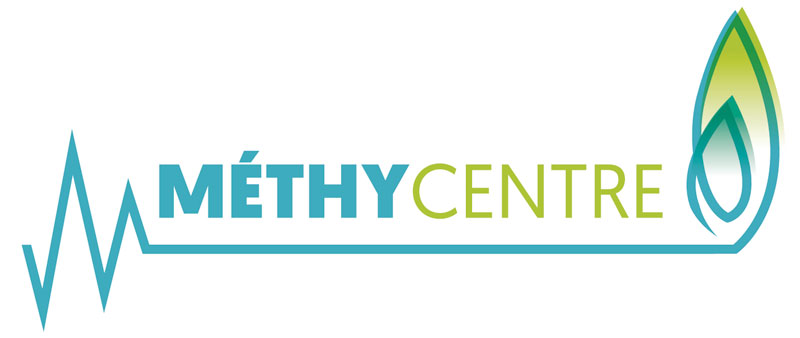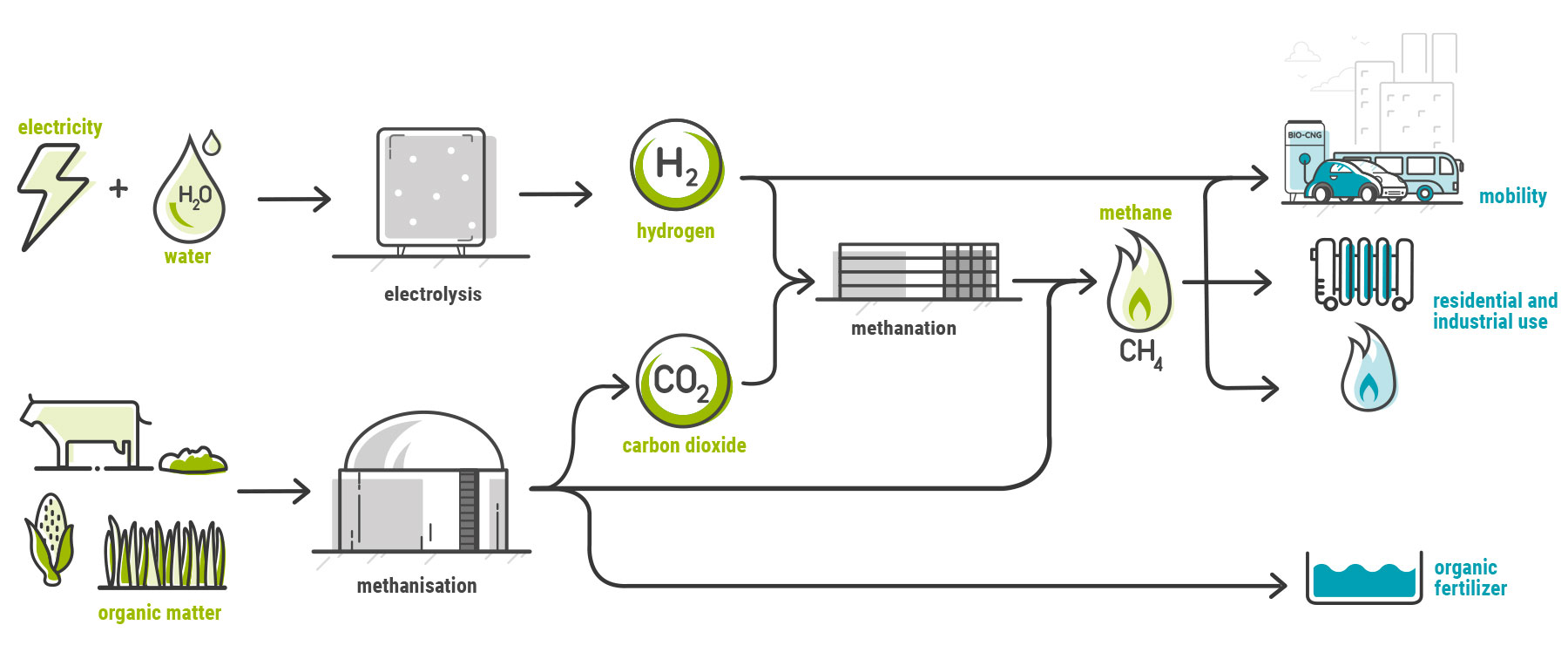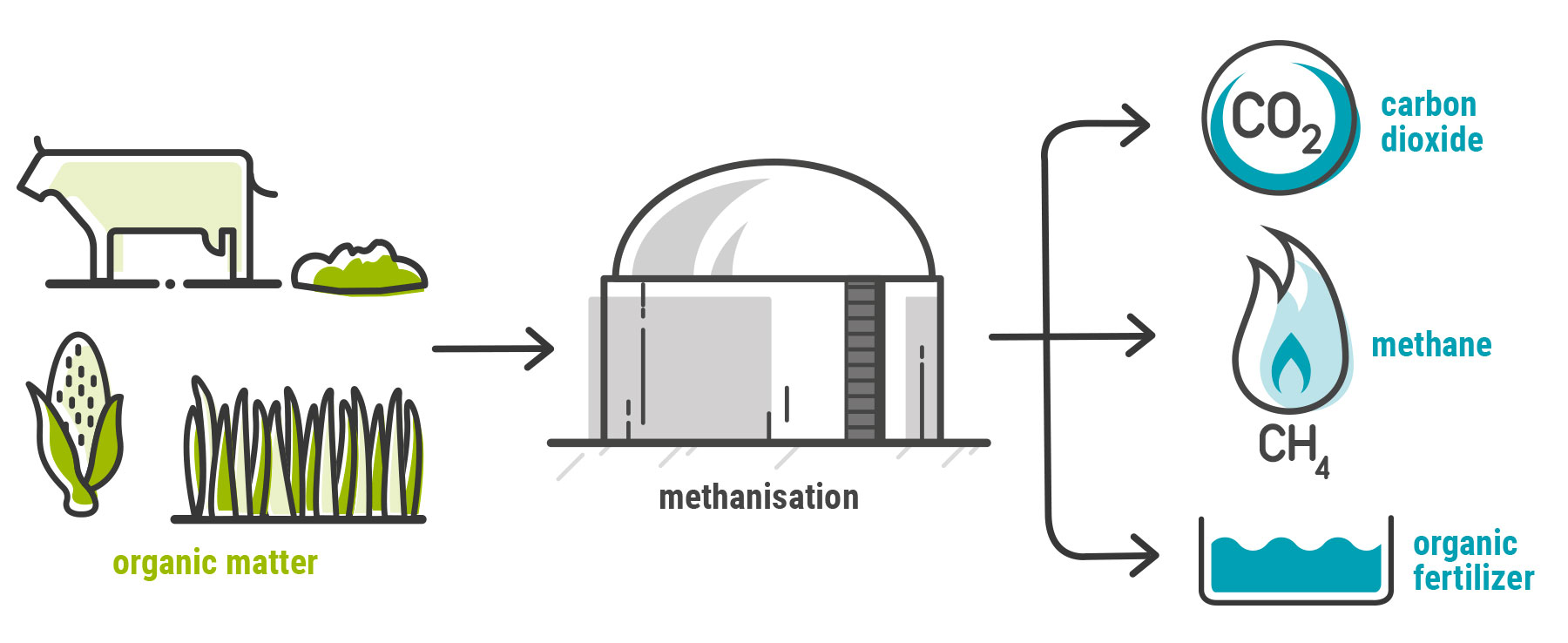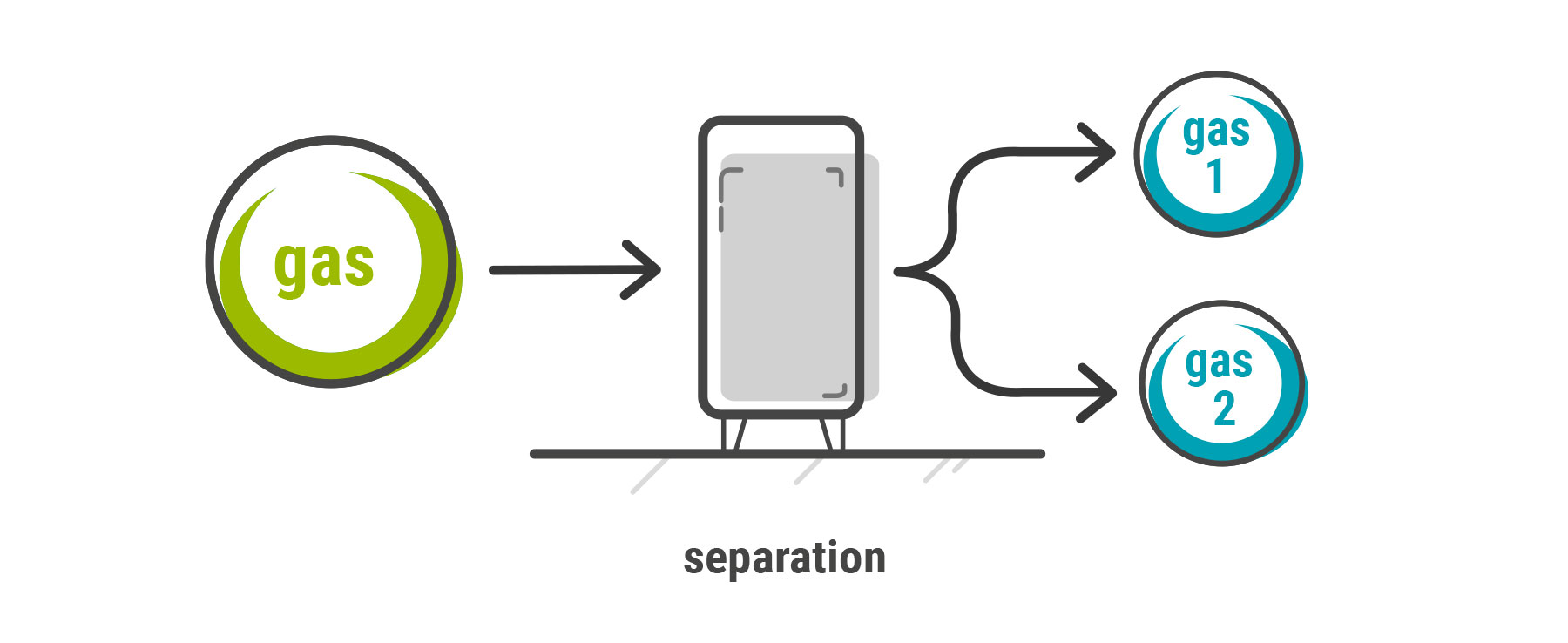The concept
MethyCentre is a power-to-gas demonstrator coupled with a methanization unit.
The demonstrator comprises two main technologies: electrolysis and methanation, and a shared gas separation function with the methanation unit for green gas specifications.
The issues behind MethyCentre
MethyCentre meets one of the challenges of the energy transition:
store energy from renewable sources.
What can you do when the energy you produce doesn’t meet your consumption needs?
Wind turbines and solar panels produce energy intermittently, depending on weather conditions (wind, sun), and electricity is not a storable form of energy. However, at any given moment, renewable electricity production is sometimes greater than consumption needs (wind power at night in particular), so the grid cannot absorb them. On the other hand, there are times when climatic conditions make it impossible to cover consumers’ needs with renewable energy.
Production from renewable sources such as wind, solar and biomass must be able to be stored when produced in surplus, so that it can be consumed when needed.
Gas is a storable energy carrier. For over 60 years, Storengy’s underground storage sites have been storing natural gas to make it available when needed.
Discover these technologies, each contributing to a common goal: energy storage.
Methanization
How can gas be produced from organic matter?
Thanks to this biological process, organic matter is broken down into :
– Gas (methane – CH4), equivalent to natural gas.
– Carbon dioxide (CO2)
– Organic fertilizer (fertilizer for agricultural lands)
Methanization is a natural phenomenon that occurs spontaneously, particularly in marshes. It uses otherwise less valued materials.
Methanization allows for the replacement of the use of imported synthetic fertilizers on cultivated lands with organic amendments. This substitution reduces diffuse pollution of rivers or groundwater
The Power-to-Gas
How to produce gas from electricity?
It involves using electricity from renewable sources such as wind or solar, for example, to generate gas that can be stored. The combination of two processes makes it possible: electrolysis and methanation.
Electrolysis.
Producing hydrogen from water through electrolysis
Electrolysis is a process that allows the decomposition of water into hydrogen and oxygen through the input of electricity. The device used to implement this type of process is called an electrolyzer.
There are three main water electrolysis technologies: alkaline, PEM (Proton Exchange Membrane), and SOEC (Solid Oxide Electrolysis Cell, high-temperature electrolysis). The PEM technology will be used in the MethyCentre project because it is more flexible in addressing the challenges of electrical grid balancing
Methanation
Producing methane from hydrogen and CO2.
Through the methanation process, carbon dioxide (CO2) and hydrogen (H2) produce methane (CH4) and water (H2O)
There are two major technological families of methanation: catalytic and biological. Catalytic methanation will be used in the MethyCentre project, specifically the structured-millimeter technology.
In MéthyCentre, the CO2 used for methanation will be derived from methanization. MethyCentre thus allows the valorization of CO2 that would otherwise be lost The hydrogen used will be obtained through water electrolysis.
The gas separation
How to separate two gases for valorization?
Several purification/separation technologies, more or less mature, exist in the market. They allow purifying biogas or synthetic gas to produce biomethane or synthetic methane according to the required specifications
In the MethyCentre project, membrane separation, based on the difference in permeability of membranes towards the components of biogas or synthetic gas, will be used for gas specifications compliance





